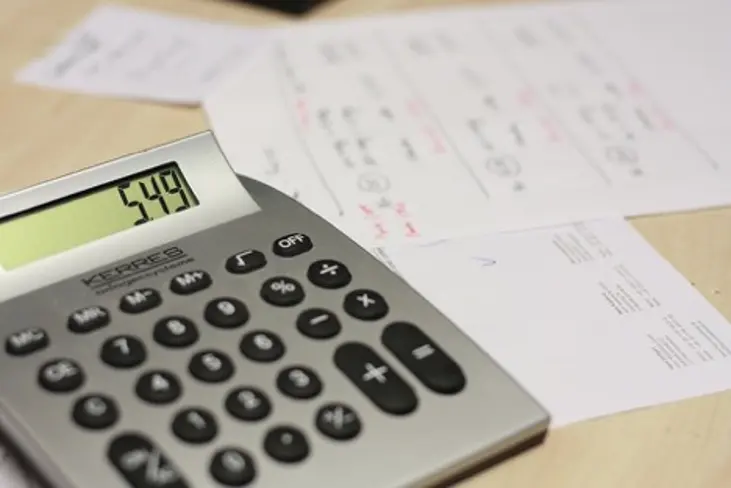Categories


Why Should You Start Creating an Emergency Fund?
Emergency funds are meant to help you deal with unexpected expenses, but what form can these take? The truth is, what may be an emergency expense for one person may not necessarily be one for another. Ultimately, you’ll have to decide how pressing your needs are. There are broad categories of things that a lot of people may consider to be an emergency, like unexpected car repairs, important medical expenses that you have to pay for out of pocket, or essential home repairs. On top of having a general idea of some of the things that may constitute a financial emergency, it’s also important to have a clear sense of what your emergency fund shouldn’t be used for. Basically, this money shouldn’t go towards anything that isn’t an unexpected and an essential expense, like vacations or general shopping excursions. It also shouldn’t be used for recurring expenses like your regular bills or your groceries. It shouldn’t even be used for any sort of long-term savings plans. It’s simply a financial safety net for times of need.
On top of having a general idea of some of the things that may constitute a financial emergency, it’s also important to have a clear sense of what your emergency fund shouldn’t be used for. Basically, this money shouldn’t go towards anything that isn’t an unexpected and an essential expense, like vacations or general shopping excursions. It also shouldn’t be used for recurring expenses like your regular bills or your groceries. It shouldn’t even be used for any sort of long-term savings plans. It’s simply a financial safety net for times of need.
How Big Should Your Emergency Relief Fund be?
Before you start contributing to your emergency fund, you should have at least a general target to aim at. A common emergency fund rule of thumb that you might hear is that you should have six months’ worth of living expenses saved up. The truth is, the exact amount that you should be looking to save is going to vary from person to person based on a bunch of different factors. This can include things like what your income looks like, how many dependents you have, how full your budget is, and more. Three to twelve months’ worth of living expenses is a good starting place, but where you fall on that spectrum is going to be something that you’ll need to figure out.Where Should you Put your Emergency Funds?
The key when it comes to storing your emergency funds is that you’re going to want to put this money somewhere that you can access it fairly easily if you need it, but not somewhere that you’re going to stave off temptation to use it. Generally, you wouldn’t want to put this money in a new checking account, or even worse, keep your emergency savings in the same account as your everyday cash. Instead, put it in a high-yield savings account that you can withdraw funds from without paying any sort of penalty. The money you put in there will gain interest (albeit slowly), and you know that if you need it, you can tap into it fairly easily.Creating an Emergency Fund in 3 Steps
Like we mentioned, an emergency fund isn’t built overnight, but the basic steps to building one are relatively simple. Here are three important steps for you to take.1. Build a Budget
A budget is the best way to organize your finances, and if you want to start contributing to your emergency fund, you’ll need to be organized. To get started, list out your regular monthly expenses as well as all your sources of income. While not all your expenses are going to remain static from month to month, you can average out your last six months’ worth of expenses to get a fairly clear idea of how much you generally spend. From here, you can get a better sense of whether or not you have leftover money each month, how much, and how much you can start contributing to an emergency fund. If you want to follow a more structured framework, do some research online and take a look at some different budgeting guides. There are a lot of budgeting methods out there, so look for something that’s well-suited to your situation.
If you want to follow a more structured framework, do some research online and take a look at some different budgeting guides. There are a lot of budgeting methods out there, so look for something that’s well-suited to your situation.
2. Pick your Savings Goal
Once you have a good sense of the amount of money you generally go through in a month, you can begin to set your savings goals. While it’s fine to set your sights high in the long run, be sure to break your long-term savings goals down into smaller amounts. You need realistic goals to strive for, and if you’re only ever starting at the big number you’re trying to hit, you can risk getting discouraged.3. Update your Goals as Needed
While it’s important to set short and long-term savings goals for your emergency fund, it’s also important to stay flexible throughout the process. As time goes on, your budget may undergo some changes that are ultimately going to impact how much money you’re able to save. Maybe you stumble into an emergency and need to use a line of credit or credit card to handle the expense. In this case, you might need to divert some of the money you were planning on saving to go towards paying off your debt. On the other end of the spectrum, maybe you get a nice pay bump at work which let’s you save even more than you could before. Either way make sure that you adjust your initial goals to reflect your current situation.3 Things you can do to Help Yourself Save Money
Even with a structure in place to build an emergency fund, it can be a hard practice to carry out when you’re living on a tight budget. So, to help you make a little extra room, here are three tips to help you save money.1. Look Through your Budget to Make Small Cuts
The first thing you should do if you’re looking to save money is to do a thorough review of your budget and make sure you have a good idea of where your money is going. There may not be a ton of wiggle room for change when it comes to the part of your budget that’s reserved for essential expenses, but that doesn’t mean that you won’t find other areas that you can cut back on. Maybe you never realized how much of your money was going towards takeout every month, and cutting out a few of these meals a week in favour of meals made at home could save you a ton on food. Or maybe you realize you don’t need four different streaming services, and decide to cut out three of them. The areas where you can cut back on are going to be specific to your situation, but you’ll never find them unless you take a good look at your budget.2. Make Saving Automatic
If the money you have coming in and going out every month is pretty consistent, you may want to consider setting up automatic transfers from your main bank account to your emergency fund. This way, you can treat your savings contributions like any regular expense you need to incorporate into your budget, but you don’t need to worry about transferring money into your emergency fund yourself.
3. Focus on Paying Off your Debts
It can be a tough balancing act to find ways to contribute to your emergency fund while also making sure you pay off whatever debt you’re carrying on time. To avoid this problem, it might be a good idea to start by paying off your debt before you really dive into the savings process. This can also help to cut down the amount of total interest you’ll need to pay on whatever loans you’re currently trying to pay off.Work Hard to Build your Emergency Fund
For anyone who’s just trying to make ends meet, the idea of saving several months of living expenses might seem impossible. Saving as little as $400 might seem hard enough! But the truth is, having an emergency fund at the ready is an important part of staying financially stable, and if you approach the process in a holistic way, it may be more within your reach than you think. Dive into your financial situation and look for ways to cut back and make room in your budget for savings. From there, you can start to take the necessary steps to build your emergency fund! Disclaimer: This page provides general information only and does not constitute financial, legal or other professional advice. For full details, see Fora’s Terms of Use.Disclaimer: This page provides general information only and does not constitute financial, legal or other professional advice. For full details, see Fora’s Terms of Use.



